CHURCH 10 - Spiritual Leadership NT: Peter
Peter's family background
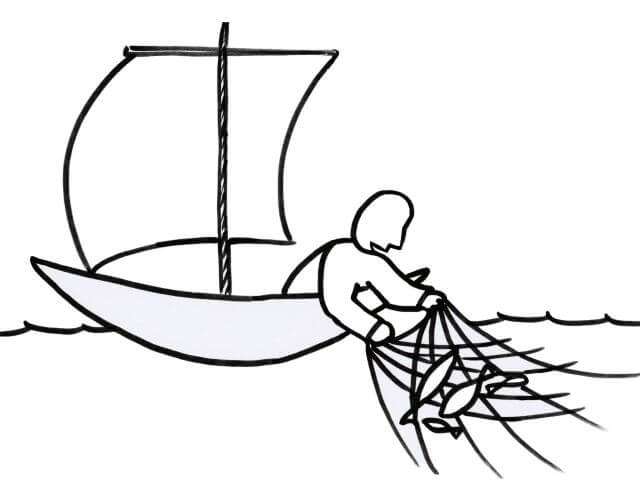
- Although mostly known as Peter, his original name was the Hebrew Simeon (Acts 15:14, 2 Pet 1:1). He later probably took on the Greek version ‘Simon’.
- His father’s name was Jonah (Mth 16:17, Jesus calls him Simon Bar-Jonah or son of John (Jhn 1:42, 21:17).
- Mth 8:14, Mrk 1:30, Luk 4:38 mention Peter’s mother-in-law being healed from a fever by Jesus, therefore we know he was married. His wife later accompanied him on his travels (1 Cor 9:5). There is no mention of any children, but it is likely they had children.
- He was a native of Bethsaida, a Greek city of the area called Gaulanitis, on the shores of the sea of Galilee (Jhn 1:44). Another home of Peter is mentioned as Capernaum, belonging to Galilee, also on the shores of the sea of Galilee (Mrk 1:29). Either he or his family had two homes, or he moved from Bethsaida to Capernaum.
- He spoke with a Galilean accent (Mrk 14:70), and was a common man not trained in the law (Acts 4:13), but ‘had been with Jesus’. As a good Jewish boy he would have definitely learned how to read and write, though. Since Galilee had quite a non-Jewish population, Peter may have known some basic Greek.
- He was a partner in the fishing business with Zebedee and his sons James and John (Luk 5:10). The group of three had been together before they met Jesus.
Peter's call to be an apostle
- Peter’s brother Andrew was a disciple of John the Baptist (Jhn 1:40-42). Peter may also have been a disciple of John, but we don’t know for sure.
- Peter was first introduced to Jesus by his brother Andrew. When Peter first meets Jesus (the first recorded meeting they had). Jesus renames him Peter (Greek) or Cephas (Aramaic), both meaning ‘Rock’ (Jhn 1:35-42). This was probably at the very beginning of Jesus’ Galilean ministry, before John the Baptist was arrested.
- After John the Baptist’s arrest, Peter and Andrew were fishing in Galilee, when Jesus called them to follow him and become fishers of men (Mth 4:18, Mrk 1:17).
- In Luke, more detail of his call is given: Jesus taught the people on the shore from Peter’s boat. Jesus then tells Peter to start fishing after they had had a fruitless night, resulting in them catching a huge number of fish (Luk 5:1-11).
- Jesus later chose him as one of the twelve apostles (Mrk 3:16, Lk 6:14). John in his gospel usually calls him ‘Simon Peter’. Mark in his gospel calls him ‘Simon’ up to the choice of the twelve apostles (Mrk 3:16), then he calls him ‘Peter’.
Peter during the ministry of Jesus
- Peter was the leader of the 12 disciples. He was one of the first to be called and is always mentioned first in the lists of the twelve (Mth 10:2, Mrk 3:16, Luk 6:14).
- He was one of the three closest to Jesus: Peter, James and John, who were present at the most significant times: the raising of Jairus’ daughter (Mrk 5:37), the transfiguration (Mrk 9:2), Gethsemane (Mrk 14:33) and the Olivet Discourse (Mrk 13:3).
- Peter and John were the ones sent to prepare the Passover (Luk 22:8).
- Peter was impulsively outspoken, tending to act and speak before thinking. It was Peter who asked Jesus to call him to walk on the water (Mth 14:28). During the transfiguration he blurted out about building booths for Jesus, Moses and Elijah (Mth 17:4, Mrk 9:5, Luk 9:33) – he did not know what to say (Mrk 9:6). He rashly promised that he would not fall away like the others and would even die with Jesus (Mth 26:33,35, Mrk 14:29, Luk 22:34, Jhn 13:36), then the other apostles said the same, equally rashly. Peter had problems with Jesus washing his feet (Jhn 13:6-9) and cut off the ear of the high priest’s slave during the arrest (Jhn 18:10). His attempt to enter the court yard of the priest ended with him denying Jesus (Mth 26:69-75, Mrk 14:66-72, Luk 22:54-62, Jhn 18:15-18). He led the disciples back to fishing in Galilee after the crucifixion (Jhn 21:3) and leapt into the sea when he saw Jesus (Jhn 21:7).
- He was the spokesman for the twelve, often asking questions. Asking Jesus to explain parables (Mth 15:15, Luk 12:41), asking how often he should forgive his brother (Mth 18:21), asking what they will receive as they left everything to follow Jesus (Mth 19:27, Mrk 10:28, Luk 18:28), asking Jesus who else they could go with if they left him (Jhn 6:68) and asking who the betrayer was (Jhn 13:24). He told Jesus that everyone was searching for him (Mrk 1:36) and pointed out the wilted fig tree (Mrk 11:21). When Jesus asked who touched him in the incident with the woman, Peter said to Jesus that the crowd pressed upon him (Luk 8:45). The collectors of the half shekel tax asked Peter whether Jesus paid the tax – which he later did with a coin found in the mouth of a fish (Mth 17:24). Jesus asked Peter in Gethsemane whether they could not stay awake for one hour (Mth 26:40, Mrk 14:37).
- Peter’s confession of identifying Jesus as the ‘Christ’ (Greek) or ‘Messiah’ (Hebrew) is recorded as a turning point in all four gospels (Mth 16:16, Mrk 8:29, Luk 9:20, Jhn 13:37).
- But Peter blows it again when he cannot accept the concept of a suffering Messiah (Mth 16:22, Mrk 8:32).
- Jesus affirmed his name as ‘Peter’, the rock in Mth 16:18: “On this rock, I will build my church” (Mth 16:18). The actual identification of the rock is greatly disputed. Either it is Peter’s confession of the Messiah-ship (Reformed interpretation) of Jesus, or it is Peter himself (Catholic interpretation).
- Others say there is a play on words; that when referring to Peter the exact word is ‘pebble’ / ‘small stone’ but when referring to the church it is ‘boulder’ or ‘big stone’.
Peter's denial of Jesus and restoration
- Jesus predicted Peter’s denial after his rash promise of not falling away (Mth 26:34, Luk 22:31-34), even contrasting himself with the others ‘even though all will become deserters, I will not’ (Mrk 14:29).
- Peter tries to defend Jesus by sword, but gets rebuked, and a last miracle is performed for the injured man (Luk 22:50-51, Jhn 18:10-11).
- Peter follows Jesus as far as the courtyard of the high priest (Mth 26:58, Mrk 14:54, Luk 22:54, Jhn 18:15), but denied he knew Jesus when asked by two maids and a bystander (Mth 26:70,72,74, Mrk 15:66-72, Luk 22:54-62, Jhn 18:17-27).
- The risen Jesus told the women to go and tell the disciples, and specifically Peter, that he was risen (Mrk 16:7-8, Jhn 20:2). Peter looked into the tomb and saw the linen cloths lying empty (Luk 24:12, Jhn 20:6). Jesus appeared to Peter (Luk 24:34, 1 Cor 15:5).
- Back by the sea of Galilee Jesus restores Peter by asking 3 times whether he loved him and by calling him to feed his sheep – reaffirming Peter’s pastoral function in the church (Jhn 21:15-18). Jesus also predicts Peter’s death as a martyr (Jhn 21:18).
Peter as the leader of the First Church
- Peter heads the list of the apostles after the ascension (Acts 1:13) and clearly is the leader of the disciples. See the selection of Matthias to replace Judas (Acts 1:15).
- After the coming of the Spirit, Peter stands and preaches, explaining to the crowds what has happened (Acts 2).
- He and John heal the lame man at the Beautiful Gate and preach again to the crowds (Acts 3). This annoys the religious leaders who arrest Peter and John and bring them to the high priest, where Peter again is the spokesman. They are amazed at the boldness of Peter and John and release them, telling them not to preach, which Peter and John dismiss. They are obedient to God, rather than man (Acts 4).
- Peter, as leader, rebukes Ananias and Sapphira, administering church discipline (Acts 5:1-11). His shadow cures the sick (Acts 5:15). He is again arrested with the apostles and miraculously released from prison, then re-arrested, tried and beaten, and finally saved from death by Gamaliel’s advice (Acts 5).
- Peter and John are sent from Jerusalem to Samaria, in response to Philip’s ministry, and pray for people to receive the Holy Spirit, again showing Peter in a leadership position. A certain Simon who tries to buy the power of the Spirit is rebuked (Acts 8).
- James then probably takes over the leadership of the Jerusalem church, allowing Peter to travel around Palestine.
- Acts 9 describes some of Peter’s ministry in Lydda, were Aeneas, the paralytic, is healed by Peter. In Joppa, he raises Tabitha from the dead.
- Acts 10 describes Peter’s crucial vision. He goes to the Roman Cornelius, who (together with his family) becomes the first Gentile to be converted and receive the Spirit. Peter has to defend this action to the Jerusalem church in Acts 11.
- King Herod has James killed, and upon seeing it pleases the Jews has Peter arrested to be executed. An angel of the Lord brings Peter out from prison, much to the surprise of the church, who is praying for his release (Acts 12).
- Paul visits Peter and James in Jerusalem (Gal 1:18). James, Peter and John are regarded as pillars in the church at this time. They recognize their calling to the Jews and Paul’s calling to the Gentiles (Gal 2:9).
- Peter later comes to Antioch where he withdraws from fellowship with Gentile converts when the Judaizing believers appear from Jerusalem. This incurs the rebuke of Paul for acting inconsistently with his teaching (Gal 2:11-14). It seems Peter repents, because at the Jerusalem council he fully supports Paul on this point (Acts 15).
Peter's later life & death
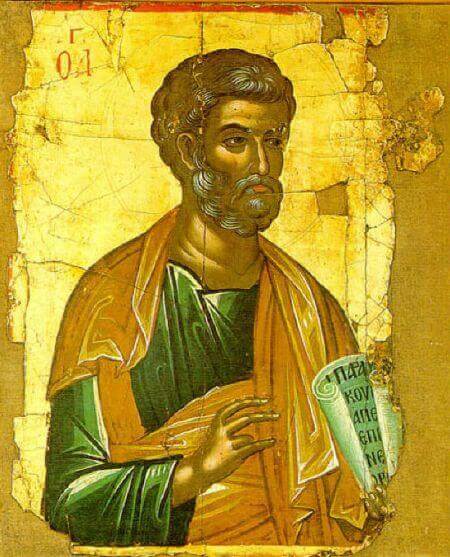
- Peter is present at the Council of Jerusalem (AD 49), together with Paul stating the case against requiring Gentiles to keep Jewish law (Acts 15), a monumental decision.
- He probably visited Corinth at some time, as there was a group there who exclusively follows Peter (1 Cor 1:12).
- Peter is associated with the church in Bithynia and Pontus (northern Asia Minor), where his first letter is addressed to (1 Pet 1:1) and probably his second letter (2 Peter) as well. He writes with authority as the eyewitness that he is (2 Pet 1:16-18): ‘we had been eyewitnesses of his majesty. 17 For he received honor and glory from God the Father when that voice was conveyed to him by the Majestic Glory, saying “his is my Son, my Beloved, with whom I am well pleased.” 18 We ourselves heard this voice come from heaven, while we were with him on the holy mountain.’ We do not know whether Peter founded these churches, but at least he was acquainted with them.
- There is no hard evidence at all for Peter having founded the church in Rome, but he definitely visits Rome in the last year of his life. 1 Peter is almost certainly written from Rome (1 Pet 5:13), just before or during the Neronian persecution, when the Christians were made the scapegoat for the fire of Rome in AD 64. Peter is probably killed during this time, along with Paul and a thousand other believers.
- The “Quo Vadis” tradition says that Peter flees Rome to avoid death on the advice of friends. In the night on the Appian Way he meets Jesus in a vision and asks Jesus, “Where are you going?” Jesus answers, “I am going to Rome to be crucified again”. Peter, utterly ashamed, returns to the city and is crucified head downward, not feeling worthy to be crucified in the same way as Jesus. The place where Jesus meets Peter is held to be the site that now the Peter’s Dome is built on (see pictures below).
- Church historian Eusebius (died 339 AD) wrote this: ‘Peter seems to have preached to the Jews of the Dispersion in Pontus and Galatia and Bithynia, Cappadocia and Asia, and at the end he came to Rome and was crucified head downwards, for so he had demanded to suffer.’
- Tradition has Peter’s wife (Concordia or Perpetua) also being martyred. Peter encourages her to be brave, saying, “Remember, dear, our Lord”.
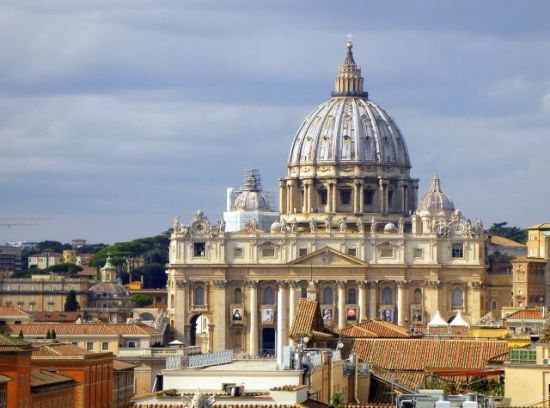
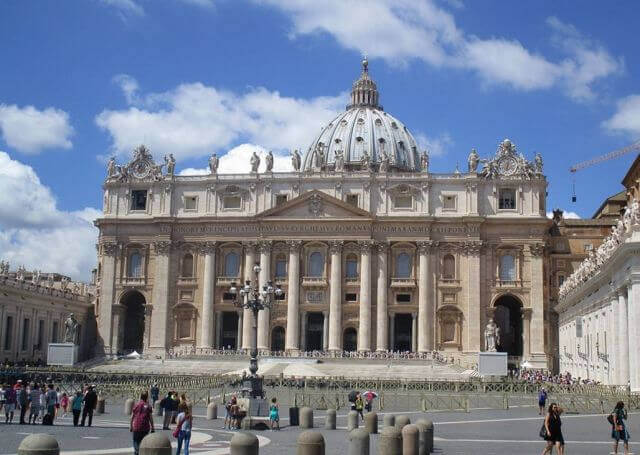
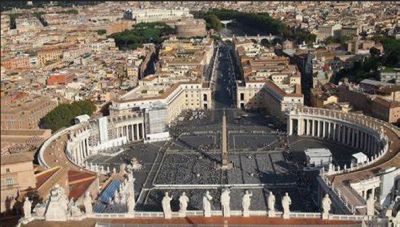
Summary
- It’s encouraging to see just how different the leaders are that Jesus uses to the fullest: a self-righteous Pharisee like Paul, a disappointment like John Mark, a shy introvert like Timothy, a burly talk-now-think-later person like Peter. And – if the OT is considered – the stutterer Moses, the farmer Amos, the diplomatic eunuch Daniel, …
- To quote C.S. Lewis: “How boringly similar are all tyrants, how gloriously different are all the saints!”
- Peter starts as a minimally educated fisher boy in the backyard of the Roman Empire. By the end of his life he writes letters in Greek, addressing people and areas that he probably didn’t even know existed at first. His writings have gone to all the world and millions have recognized them as the inspired Word of God over the centuries.
- Peter’s life is therefore a powerful example of God as the great Developer of human lives, if only we let him. Or as another proverb says: “Christianity is an education”.
- Peter is a leader who can stand upfront if need be, but he doesn’t feel he has to stay upfront. When he feels God moves him on, be has no problem for the leadership of the Jerusalem church to go to somebody else.
- Peter is not infallible (so no pope has to be either). Many of his wrong reactions are on record, also later as leader. In 48 AD, when Paul challenges him about the Gentile issue, Peter accepts correction, agrees with truth and aligns his opinion with Paul, because he was right. Leaders don’t have to be infallible, but they have to be humble.